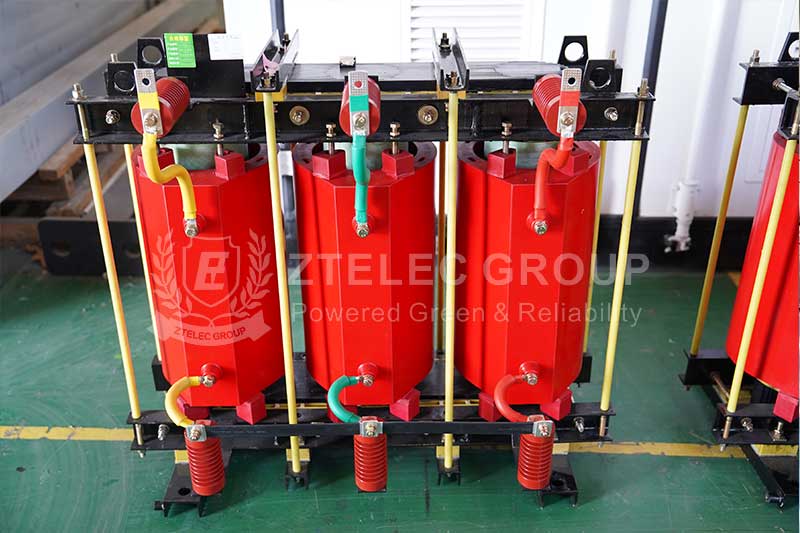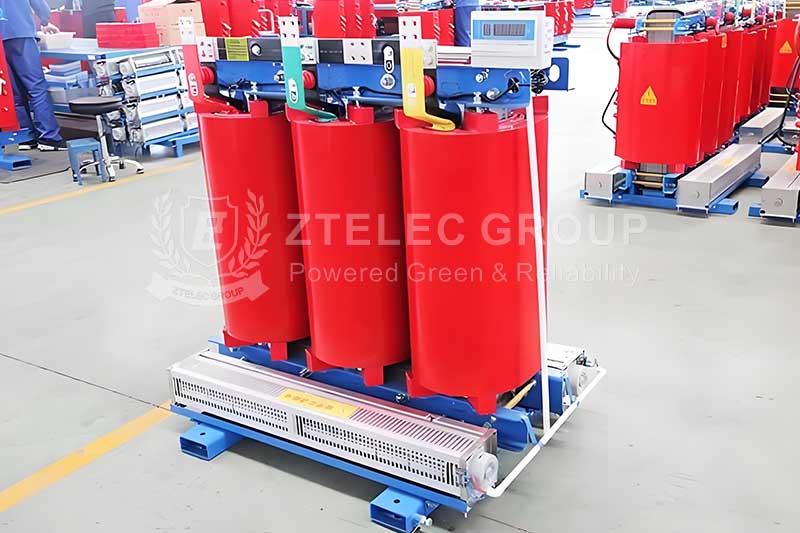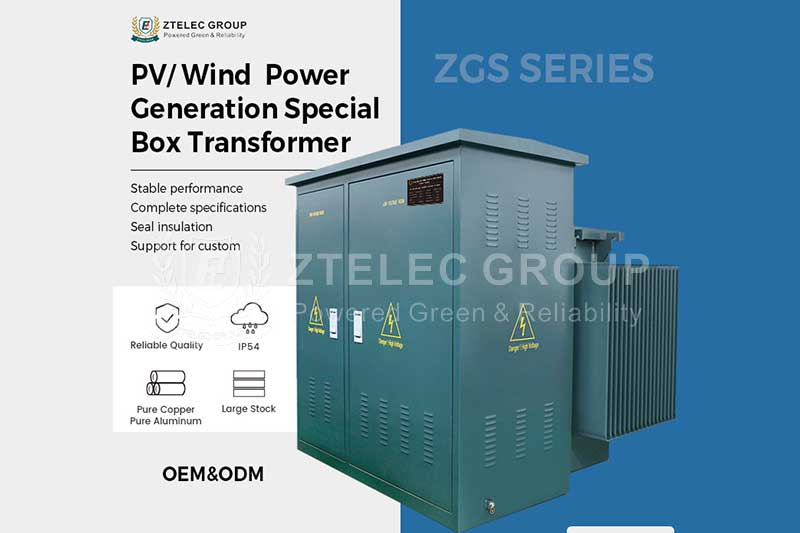Research and development progress of environmentally friendly dry-type transformers
Time:2025-02-13 Auther:ZTelec-www.ztelectransformer.com
As the world pays more and more attention to environmental protection and sustainable development, the power industry is also actively exploring more environmentally friendly and efficient technical solutions. As an important power equipment, dry-type transformers have gradually become the mainstream choice in power distribution systems due to their advantages such as oil-free, fireproof, and low noise. In recent years, the research and development of environmentally friendly dry-type transformers has made significant progress, not only in terms of materials, design, and manufacturing processes, but also in terms of energy efficiency, environmental performance, and intelligence.
Definition and characteristics of environmentally friendly dry-type transformers
Environmentally friendly dry-type transformers refer to transformers that minimize the impact on the environment during design, manufacturing and use, and have the characteristics of high efficiency, energy saving and safety. Compared with traditional oil-immersed transformers, environmentally friendly dry-type transformers have the following significant features:
Oil-free design: Solid insulation materials are used to avoid oil pollution and fire risks.
Efficient and energy-saving: No-load loss and load loss are reduced by optimizing design and material selection.
Low noise: Advanced noise reduction technology is used to significantly reduce operating noise.
Environmentally friendly materials: Recyclable, non-toxic and harmless materials are used to reduce negative impacts on the environment.
Long life and low maintenance: The structural design is more reliable, maintenance cost is low, and service life is long.

Key technological progress of environmentally friendly dry-type transformers
1. Application of environmentally friendly materials
Epoxy resin: As the main insulating material of dry-type transformers, epoxy resin has excellent electrical properties and mechanical strength. In recent years, RD personnel have developed environmentally friendly epoxy resins with low toxicity and low volatility by improving the formula.
Recyclable materials: Recyclable metal and plastic materials are used in transformer housings and structural parts to reduce resource waste.
Bio-based materials: Some research institutions are exploring the use of bio-based materials (such as plant fibers) as insulating materials to further reduce the impact on the environment.
2. Intelligence and digitalization
Remote monitoring and control: Realize real-time monitoring and control of transformer operation status through Internet of Things technology. Timely discover problems and make adjustments to improve operation efficiency.
Intelligent protection and diagnosis: Use intelligent protection devices and fault diagnosis systems to achieve intelligent protection and fault diagnosis of transformers and improve safety and reliability.
Energy-saving optimization and dispatching: Combined with intelligent management systems, energy-saving optimization and dispatching of power systems are carried out to reasonably allocate power resources and reduce energy consumption costs.

3. High-efficiency and energy-saving design
Low-loss core material: Use amorphous alloys or nanocrystalline alloys with high magnetic permeability and low loss as core materials to significantly reduce no-load losses.
Optimized winding design: Through computer simulation and optimization algorithms, a more efficient winding structure is designed to reduce load losses.
Intelligent temperature control system: Integrated temperature sensors and intelligent control systems monitor transformer temperature in real time and optimize cooling efficiency.
4. Noise reduction technology
Low-noise core: Reduce the noise caused by magnetostriction by improving the core lamination process.
Soundproof shell: Use soundproof materials and structural design in the transformer shell to further reduce operating noise.
As a green pioneer in the power industry, environmentally friendly dry-type transformers carry the important mission of promoting energy transformation and promoting environmental protection. In future development, we should further increase the research and development and application of environmentally friendly dry-type transformers, continuously improve the performance and intelligence level of equipment, and make greater contributions to the construction of a clean and efficient energy system.




